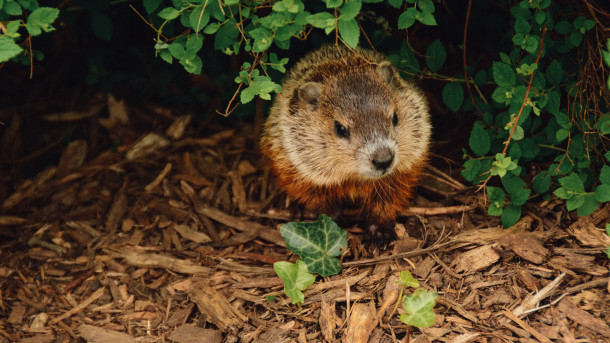Groundhogs, also known as woodchucks or whistlepigs, are fascinating creatures belonging to the marmot family. These stout-bodied rodents are a common sight across North America, but Where Do Groundhogs Live exactly? Understanding their habitat preferences and geographic distribution is key to appreciating these animals and their role in the ecosystem. This article delves into the typical habitats of groundhogs, their burrowing habits, and where you are most likely to find them.
Preferred Habitats of Groundhogs
Groundhogs are adaptable animals, but they show a clear preference for certain types of environments. They thrive in areas that offer a combination of open spaces for foraging and wooded areas for shelter and burrowing. Here are some of the habitats where groundhogs are commonly found:
- Forest Edges: The transition zones between forests and open fields are ideal for groundhogs. These edges provide access to both cover from predators in the woods and ample vegetation in the open areas.
- Meadows and Open Fields: Groundhogs are herbivores and rely heavily on grasses, clover, and other green plants for food. Meadows and open fields offer a plentiful food supply, making them attractive habitats.
- Roadsides and Stream Banks: Disturbed areas like roadsides and stream banks, often with softer soil and vegetation, can also serve as groundhog habitats. These areas may provide easier digging conditions for their burrows.
- Pastures and Agricultural Lands: While sometimes considered pests by farmers, groundhogs frequently inhabit pastures and agricultural lands. These areas often provide a consistent supply of food, though they can lead to conflicts when groundhogs feed on crops.
- Sparse Woodlands and Dense Forests (Occasionally): While less common, groundhogs can also live in sparse woodlands and even venture into denser forests. In these settings, they may utilize clearings or edges within the forest.
 Groundhog in a grassy field, showcasing typical groundhog habitat.
Groundhog in a grassy field, showcasing typical groundhog habitat.
Geographic Distribution of Groundhogs
Groundhogs are widely distributed across North America. Their range extends from:
- Eastern United States: Groundhogs are prevalent throughout the eastern United States.
- Central United States: Their distribution continues into the central regions of the US.
- Northward Across Canada: Groundhogs are found across Canada, occupying a significant portion of the country.
- Into Alaska: Their range even extends into parts of Alaska, demonstrating their adaptability to colder climates.
This extensive geographic range indicates that groundhogs are well-suited to a variety of climates and environments within North America.
Groundhog Burrows: Their Underground Homes
A crucial aspect of where groundhogs live is their elaborate burrow systems. Groundhogs are renowned for their digging prowess, creating complex underground networks that serve as their homes. These burrows are not just simple holes in the ground; they are intricate structures with multiple chambers and tunnels.
- Complex Structures: Groundhog burrows can include multiple entrances, sleeping chambers, nursery chambers, and even waste chambers. This complexity provides safety, shelter, and different functional areas within the burrow.
- Extensive Tunnels: These burrow systems can be quite extensive, stretching from 8 to as long as 66 feet in length. This provides ample space and multiple escape routes for the groundhog.
- Habitat Connection: Groundhogs typically construct their burrows in the habitat types mentioned earlier – forest edges, fields, and meadows – choosing locations with suitable soil for digging and proximity to food sources.
Adaptability Beyond Burrows
While known for their burrows, groundhogs are not limited to underground living. They exhibit surprising adaptability in their behavior and habitat use:
- Swimming Ability: Groundhogs are capable swimmers. This allows them to traverse streams and potentially expand their habitat range or escape predators.
- Climbing Skills: They can also climb shrubs and trees. This ability might be used to access food sources like fruits or buds, or to gain a better vantage point of their surroundings.
Conclusion: Groundhogs Across the Landscape
In conclusion, when considering where groundhogs live, it’s clear they are adaptable animals that thrive in a variety of habitats across a wide geographic range. From forest edges and meadows to roadsides and even sparse woodlands, groundhogs have carved out niches for themselves across North America. Their intricate burrow systems are central to their lifestyle, providing shelter and security. Whether you live in a rural or suburban area, keep an eye out – you might just spot a groundhog near you, particularly in the open spaces adjacent to wooded areas that they call home.
